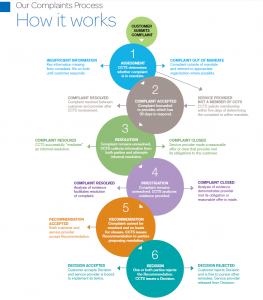Canada’s wireless policy has been generating a lot of chatter in the past few weeks. Some articles suggest that we are seeing a failure in achieving the policy objectives of the government. I was on BNN-TV last week providing some of my viewpoints.
If we are failing at achieving the objectives, the first question that needs to be asked, of course, is “What exactly was the objective?” In the absence of an overall national digital strategy, it has sometimes been difficult to determine what the government would like to achieve.
In a March 7 speech, the Industry Minister said that he wants to see “at least four players in each market.” When the statement was made in early March, it was one of the first times we have heard a clear objective being stated. We want at least four players in every market.
Normally, if there is a clear objective, one might expect that people would start to align their actions in pursuit of that objective. Perhaps start by looking at where we see four healthy players competing and try to encourage the replication and expansion of those conditions.
Can the Canadian market support four facilities based mobile wireless carriers? Quite likely. In fact, seven of the 10 provinces have strong, well financed wireless players other than Rogers, TELUS and Bell. Indeed, in Manitoba and Saskatchewan, the so-called Big 3 share only a third of the market as they battle MTS and SaskTel.
Will we see a fourth national carrier? Not a chance. At least not with the national policy framework we have in place.
I would go further and state that in choosing its spectrum and auction policy, whether by intent or unintended consequence, Industry Canada effectively blocked a fourth national wireless provider.
How else can one explain Industry Canada’s designation of MTS and SaskTel as wireless new entrants? These are incumbent telephone companies that have held wireless spectrum since the beginning of time. With two-thirds of the market in their operating territory, each has the highest regional market share of any phone company in Canada. Yet both were eligible to bid – and win – in their home territory for “new entrants” spectrum. As I warned five years ago, Industry Canada effectively anointed these companies to be the spoilers for anyone with national aspirations.
Despite this, Industry Canada offered an extra five years of in-territory roaming incentives, reserved solely for new entrants that acquired national spectrum or combined with others to build a national consortium.
At the time, if the government had truly wanted a national providers, it might have put some or all of the new entrant block of spectrum up for sale as a single 40 MHz national block. It could have offered a 20 Mhz parcel. It could have put in place 10 year, or perpetual restrictions on the sale of the spectrum to Rogers, TELUS and Bell. It did neither. So why are we feigning surprise at the outcome, five years later, of seeing investors looking at every option to recover their capital assets?
The government was not considering strong global brands entering the Canadian market. Why else would the government have waited until after the AWS auction to reform foreign ownership legislation?
Regardless of messages being heard from Ottawa, the actual policies have encouraged the deployment of billions of dollars of capital in pursuit of regional players. There shouldn’t be surprises emerging from recent M&A activity. The government put in place a 5-year moratorium on the transfer of new-entrant spectrum to incumbents, and now that we are coming up on the five year mark, why is anyone surprised that the dealing has begun? Five years must have seemed like such a long time, five years ago.
The market is behaving the way one might expect, given the signals from Ottawa. When the government signaled uncertainty over spectrum license transfers, the uncertainty likely contributed to the urgency of Mobilicity’s decision.
It should have been a predictable outcome.
The lessons for Ottawa: Set clear objectives. Align activities with the achievement of those objectives. Stop doing things that are contrary to the objectives.
I suspect this may come up more than once during the discussions at The 2013 Canadian Telecom Summit, taking place June 3-5, in Toronto. Have you registered yet?

